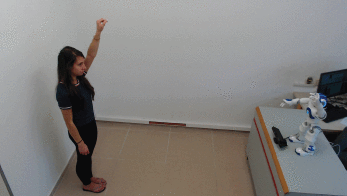
Curiosity Lab
Acerca de
Assessment of Curiosity
Curiosity is a 21st century skill and is of paramount importance in the digital age. However, the assessment of curiosity is often based on self-report or subjective observations. We present the development and evaluation of a digital quantitative assessment game for question-asking-based exploration. The student navigates a graphically presented question graph by selecting questions about a series of virtual alien worlds. The game extracts question-related quantitative measures, e.g., the breadth, depth and specificity of the answers to the questions. We conducted a study with Youth University students and administered a curiosity-based questionnaire to their class teachers as an external validation. Our results show that the measure of total question specificity in the last presented world is a significant predictor of children’s curiosity, as rated by their teachers. This suggests that curiosity can be quantitatively assessed by an entertaining digital question-based game. to the full article

In the information age, where all answers are just a click away, curiosity, the intrinsic drive to learn, becomes of paramount importance. How easy is it to prime for curiosity and what are its effects? What simple interventions can be used to enable curiosity-driven behaviors? We have conducted a large-scale study to address these questions, using a novel curiositybased application (app) on university applicants. Using the same app, we addressed the issue of curiosity assessment, which in recent years has mainly been performed via selfreporting questionnaires. The curiosity assessment tool was developed in order to assess curiosity via an objective, quantitative and digital way. The tool measured several behavioral aspects during a free and task-less interaction with the tablet app. From the recorded activity logs we calculated quantitative behavioral measures related to their exploration patterns. We show that a single word can prime the participants and induce better learning of their self-explored knowledge. We also show that by simply enabling more time to explore, without the ability to stop at will, induces more exploration and more learning. Finally, we show that our behavioral measures, obtained with the digital quantitative assessment tool, are significant predictors of the participants’ self-reported curiosity and Psychometric Entrance Test scores. These results suggest that simple priming for curiosity and enabling enough time to explore improve self-paced learning, and that a relatively simple and short interaction with a digital app can greatly improve state-of-the-art curiosity assessment. to the full article

A novel social interaction is a dynamic process, in which participants adapt to, react to and engage with their social partners. To facilitate such interactions, people gather information relating to the social context and structure of the situation. The current study aimed to deepen the understanding of the psychological determinants of behavior in a novel social interaction. Three social robots and the participant interacted non-verbally according to a pre-programmed “relationship matrix” that dictated who favored whom. Participants' gaze was tracked during the interaction and, using Bayesian inference models, resulted in a measure of participants' social information-gathering behaviors. Our results reveal the dynamics in a novel environment, wherein information-gathering behavior is initially predicted by psychological inflexibility and then, toward the end of the interaction, predicted by curiosity. These results highlight the utility of using social robots in behavioral experiments. to the full article

A novel use of social robots is introduced, namely, as an assessment tool for cognitive and social characteristics of human subjects. Social robots convey objectivity, repeatability and robustness which are highly important in assessment tools, and lacking in human and interaction-based methods. Here, we implement a fully autonomous social robot for the purpose of assessing physical curiosity of human subjects, namely, how do people explore novel physical-interaction scenarios. The complex interaction enables us to disambiguate learning, exploration and curiosity-based behaviors, where we show highly significant correlation between our extracted behavioral measures and external self-reported personality traits and Psychometric Entrance Test (PET) scores. Our results suggest that this novel experimental paradigm can be implemented in a host of social and physical assessment tasks. to the full article




